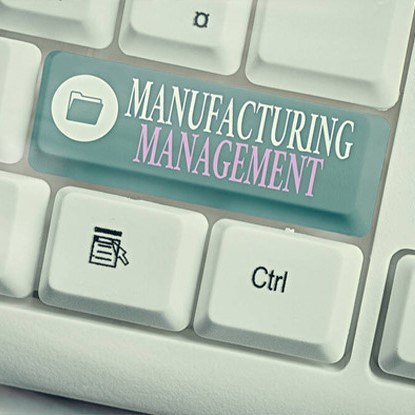Purchase-to-Pay Automation for Manufacturing: Streamlining Your Journey from Purchase Orders to Payments


Implementing P2P automation in manufacturing is a strategic move for organizations looking to enhance operational efficiency, reduce costs, and stay competitive in the dynamic manufacturing landscape. Learn how to implement P2P efficiently in our article!
In the bustling world of manufacturing, efficiency is paramount. Every cog in the machine needs to function seamlessly, maximizing output and minimizing waste. One often overlooked area that can significantly impact your bottom line is the purchase-to-pay (P2P) process. This complex journey, from ordering raw materials to paying suppliers, is ripe for automation, and doing so can unlock a treasure trove of benefits for your production line.
Imagine a world where:
This is the magic of purchase-to-pay automation for manufacturing. By implementing powerful software solutions, you can transform your P2P process from a paper-laden, time-consuming chore into a frictionless, data-driven engine of efficiency.

Revolutionize your manufacturing procurement process! InvoiceAction ensures swift invoice processing, reducing manual errors, and accelerating approvals. Experience seamless integration with your systems, boosting overall efficiency and cost-effectiveness.
Purchase-to-Pay (P2P) in manufacturing refers to the end-to-end process that organizations follow to manage and optimize the procurement of goods and services, from the initial purchase requisition to the final payment.
This comprehensive approach encompasses various stages, ensuring efficiency, cost-effectiveness, and compliance throughout the procurement lifecycle.
The process typically begins with a purchase requisition generated by the manufacturing team. This document outlines the need for specific goods or services and initiates the procurement process.
Once a requisition is approved, organizations identify and evaluate potential suppliers. This involves assessing supplier capabilities, reliability, and adherence to quality standards, ensuring they align with the manufacturing requirements.
After selecting a suitable supplier, a purchase order (PO) is created. The PO includes detailed information such as item specifications, quantity, agreed-upon pricing, and delivery terms. It serves as a contractual agreement between the buyer and the supplier.
RELATED: Manufacturing Accounting: Everything You Need to Know
Upon delivery, the goods are received and inspected to ensure they meet the specified quality standards. This step is crucial in manufacturing to prevent substandard materials from entering the production process.
Matching the supplier invoice with the purchase order and goods receipt is a critical step in the P2P process. This ensures that the invoiced items, quantities, and prices align with the agreed-upon terms in the PO.
In many organizations, invoices go through an approval workflow before processing payment. This involves verifying that the goods or services were received as expected and that the costs are accurate and within budget.
Once the invoice is approved, the payment is processed. The goal is to streamline payment procedures, optimize cash flow, and take advantage of any available discounts for early payment.
Continuous improvement is a key aspect of P2P in manufacturing. Organizations leverage reporting and analysis tools to assess procurement performance, identify cost-saving opportunities, and enhance overall efficiency.
Transform Order Management with OrderAction
Elevate your manufacturing orders to the next level! OrderAction streamlines order data capture and creation, approval workflows, and fulfillment processes. Embrace the power of automation to enhance accuracy, reduce lead times, and optimize your entire order management lifecycle.
Book a demo now
P2P streamlines processes, reduces manual errors, and optimizes spending, contributing to overall cost savings. By evaluating and selecting reliable suppliers, manufacturing organizations can build strong and mutually beneficial relationships.
P2P processes ensure adherence to regulatory requirements and mitigate the risks associated with non-compliance or substandard goods. At the same time, end-to-end visibility into the procurement process allows organizations to track and manage each stage efficiently, promoting accountability and transparency.
Implementing an effective Purchase-to-Pay system in manufacturing is crucial for maintaining a seamless and cost-effective procurement process, ultimately contributing to the overall success and competitiveness of the organization in the dynamic manufacturing landscape.

Purchase-to-Pay (P2P) in manufacturing refers to the end-to-end process that involves procuring goods or services, from the initial purchase requisition to the final payment. It encompasses various stages, including requisitioning, approval workflows, purchase order creation, goods receipt, invoice matching, and payment processing.
While Purchase-to-Pay specifically focuses on procurement and payment within manufacturing, other P2P processes may have different contexts. For example:
Different industries may use variations of P2P terminology. It’s essential for organizations to align their terminology with industry standards and communicate any specific variations internally to avoid misunderstandings.
To avoid confusion, organizations should specify the context when using the term P2P. For instance, if referring to procurement and payment in manufacturing, using «Purchase-to-Pay» clarifies the scope. Additionally, clearly defining acronyms in communications helps prevent misunderstandings.
Purchase-to-Pay in manufacturing includes key stages such as purchase requisition, supplier identification, purchase order creation, goods receipt, invoice matching, approval workflows, payment processing, and reporting and analysis.
Optimize P2P Payment Processes with ArtsylPay
Avoid payment hassles in manufacturing! ArtsylPay brings automation to payment processing, ensuring timely and accurate transactions. Experience improved cash flow, enhanced supplier relationships, and greater control over your financial operations.
Book a demo now
A leading automotive manufacturer with a complex supply chain faced challenges in managing procurement processes efficiently. Manual processes led to delays, errors, and increased operational costs.
The organization implemented a comprehensive Purchase-to-Pay automation system. This included automated purchase requisitions, real-time supplier collaboration, and an integrated invoice processing system. Among the results they achieved were:
A pharmaceutical company faced challenges in maintaining compliance, managing a vast supplier network, and optimizing procurement costs. The company adopted a Purchase-to-Pay solution with features like automated contract compliance checks, centralized vendor management, and real-time analytics.
Results:

Contact Us for an in-depth
product tour!
A technology conglomerate with diverse business units struggled with decentralized procurement processes, leading to inefficiencies and lack of cost control.
The conglomerate implemented a unified Purchase-to-Pay system that integrated with various business units, allowing for standardized processes and centralized control.
Outcome:
RELATED: Intelligent Document Processing for Manufacturing Firms
A large retail chain faced challenges in managing procurement for numerous stores, resulting in inventory imbalances and delays. The retail giant adopted an end-to-end Purchase-to-Pay automation solution that included demand forecasting, automated replenishment, and streamlined invoice processing.
What they achieved:
These case studies highlight the transformative impact of Purchase-to-Pay automation across diverse industries, showcasing improved efficiency, cost savings, and enhanced supplier relationships. The adoption of automation systems is becoming increasingly pivotal for organizations seeking to stay competitive in today’s dynamic business landscape.
Unleash the Potential of docAlpha in Manufacturing
Empower your manufacturing documentation! docAlpha transforms manual document handling into a digital powerhouse. From purchase requisitions to goods receipt, docAlpha streamlines document workflows, ensuring accuracy and compliance at every stage.
Book a demo now
Implementing an effective Purchase-to-Pay (P2P) process in manufacturing businesses involves strategic planning, technology adoption, and collaboration across departments.
Begin by conducting a thorough assessment of existing procurement processes. Identify bottlenecks, manual steps, and areas for improvement. This assessment serves as a foundation for designing a streamlined P2P workflow. Follow these key steps and considerations for a successful implementation:
Establish clear and comprehensive procurement policies that align with the organization’s goals and compliance requirements. Clearly outline the procedures for purchase requisitions, approvals, vendor selection, and payment processing.
Choose a Purchase-to-Pay solution that fits the specific needs of a manufacturing business. Look for features such as customization capabilities, scalability, integration with existing systems, and automation functionalities for requisitions, purchase orders, and invoice processing.
Provide comprehensive training to employees involved in the P2P process. Ensure that users understand the new system, workflows, and any changes in procedures. Implement change management strategies to facilitate a smooth transition and gain user acceptance.
Collaborate with key suppliers to ensure seamless integration with the P2P system. Establish clear communication channels, provide guidelines for electronic invoicing, and encourage suppliers to participate in the automated procurement process.
RELATED: Manufacturing ERP Software Guide
Design and implement approval workflows that align with the organization’s hierarchy. Clearly define authorization levels for purchase requisitions, purchase orders, and invoices. Automation of approval processes enhances efficiency and reduces delays.

Prioritize data security and compliance throughout the P2P implementation. Ensure that the system adheres to industry regulations and internal security protocols. Implement encryption measures for sensitive information and regularly audit system access.
Integrate the P2P system seamlessly with financial management systems. This integration ensures accurate recording of financial transactions, facilitates real-time reporting, and enables better financial decision-making.
Establish a system for continuous monitoring and optimization of the P2P process. Regularly review key performance indicators, gather user feedback, and make adjustments as needed. This proactive approach ensures ongoing efficiency and adaptability to evolving business needs.
Implement mechanisms to evaluate and monitor supplier performance within the manufacturing P2P system. Assess factors such as delivery times, quality of goods, and adherence to contractual terms. This evaluation informs strategic decisions regarding supplier relationships.
As the final stage, implement robust audit trails and reporting mechanisms within the P2P system. Maintain a comprehensive record of transactions, approvals, and supplier interactions. These audit trails not only support compliance but also provide valuable insights for future improvements.
By following these steps and considerations, manufacturing businesses can successfully implement a Purchase-to-Pay process that enhances efficiency, reduces costs, and establishes a streamlined approach to procurement and payment activities.
Seamless Integration, End-to-End Automation
Elevate your manufacturing efficiency by seamlessly integrating InvoiceAction, OrderAction, ArtsylPay as part of intelligent document automation docAlpha platform. Witness end-to-end automation, from procurement to payment, optimizing your processes for unparalleled productivity.
Book a demo now
A purchase requisition is a formal request initiated by an employee or department to acquire goods or services. It serves as the initial step in the Purchase-to-Pay process, outlining the need and providing details for subsequent procurement actions.
The goods receipt is a confirmation process that verifies the physical receipt of ordered goods or services. It plays a crucial role in the Purchase-to-Pay cycle, ensuring that the delivered items match the specifications outlined in the purchase order.
Invoice matching involves comparing the details on a received invoice with corresponding purchase orders and goods receipts. This step ensures accuracy in billing, quantity, and quality, helping organizations identify discrepancies and avoid overpayments.
Approval workflows in Purchase-to-Pay define the sequence of steps and individuals responsible for approving purchase requisitions, purchase orders, and invoices. These workflows streamline the authorization process, enhancing accountability and ensuring compliance with organizational policies.
Payment processing is the final stage in the Purchase-to-Pay cycle, involving the disbursement of funds to suppliers. This step follows the successful completion of goods receipt, invoice matching, and approval workflows, facilitating timely and accurate payments.
Supplier identification is the process of identifying and evaluating potential suppliers before engaging in procurement. It ensures that organizations select reliable and qualified suppliers, contributing to the efficiency and effectiveness of the Purchase-to-Pay process.
RELATED: What is Manufacturing ERP Software? All You Need to Know
Reporting and analysis involve the examination of data generated throughout the Purchase-to-Pay cycle. Organizations use this information to gain insights into spending patterns, identify areas for cost savings, and monitor compliance, contributing to strategic decision-making.
Procure-to-Pay is a broader term that encompasses the entire procurement process, from the initial request to the final payment. It includes purchase requisitions, approvals, purchase orders, goods receipt, invoice matching, and payment processing.
Scalability in Purchase-to-Pay refers to the system’s ability to adapt and handle an increasing volume of transactions as an organization grows. Scalable solutions ensure that the Purchase-to-Pay process remains efficient and effective amid changes in business operations.
Future-Proof Your Manufacturing Operations
Embrace the future of manufacturing with intelligent manufacturing process automation docAlpha. Future-proof your operations with cutting-edge automation, reducing costs, minimizing errors, and unlocking new levels of efficiency in your purchase-to-pay processes.
Book a demo now
The benefits of purchase-to-pay automation for manufacturing are undeniable. If you’re tired of outdated processes and inefficiencies, it’s time to embrace the future. Explore the available software solutions, consider your specific needs, and embark on the journey towards a streamlined, data-driven P2P process that fuels your manufacturing success.
Purchase-to-Pay automation in manufacturing involves the implementation of technology-driven solutions to streamline and optimize the entire procurement process, from creating purchase requisitions to payment processing. The goal is to enhance efficiency, reduce errors, and improve cost-effectiveness throughout the procurement lifecycle.
P2P automation typically covers stages such as purchase requisition, supplier identification, purchase order creation, goods receipt, invoice matching, approval workflow, payment processing, and reporting and analysis.
P2P automation contributes to efficiency by reducing manual errors, streamlining approval workflows, providing real-time visibility, and improving communication with suppliers. These benefits apply specifically to the manufacturing context.
P2P automation enhances supplier relationships by enabling real-time communication and collaboration, offering visibility into order status, facilitating quicker dispute resolution, and streamlining invoicing and payment processes.
Organizations can implement clear communication protocols, provide training on specific terminologies, and establish context in discussions to prevent confusion. Regular reviews of internal communication practices also help ensure consistent understanding.
Yes, P2P automation solutions are often customizable to accommodate the unique needs of different manufacturing organizations. This customization allows adaptation of workflows, approval processes, and integration with existing systems.
P2P automation contributes to cost control by improving supplier negotiations, reducing manual errors and associated costs, streamlining processes to eliminate inefficiencies, and providing better budgetary control through real-time analytics.
Reporting and analysis in P2P automation offer insights into spending patterns, data-driven decision-making capabilities, identification of areas for cost savings and process improvements, and compliance monitoring and reporting.

Successful implementation involves a thorough assessment of existing processes, choosing a suitable automation solution aligned with organizational needs, providing comprehensive user training, collaborating with suppliers for seamless integration, and continuous monitoring and optimization.
P2P automation significantly reduces procurement cycle time by eliminating manual delays, improving supplier communication, and streamlining approval workflows, leading to quicker order placement and invoice processing.
Yes, many P2P automation solutions are designed to be scalable, allowing manufacturing organizations to adapt the system to accommodate growth, ensuring continued effectiveness and efficiency.